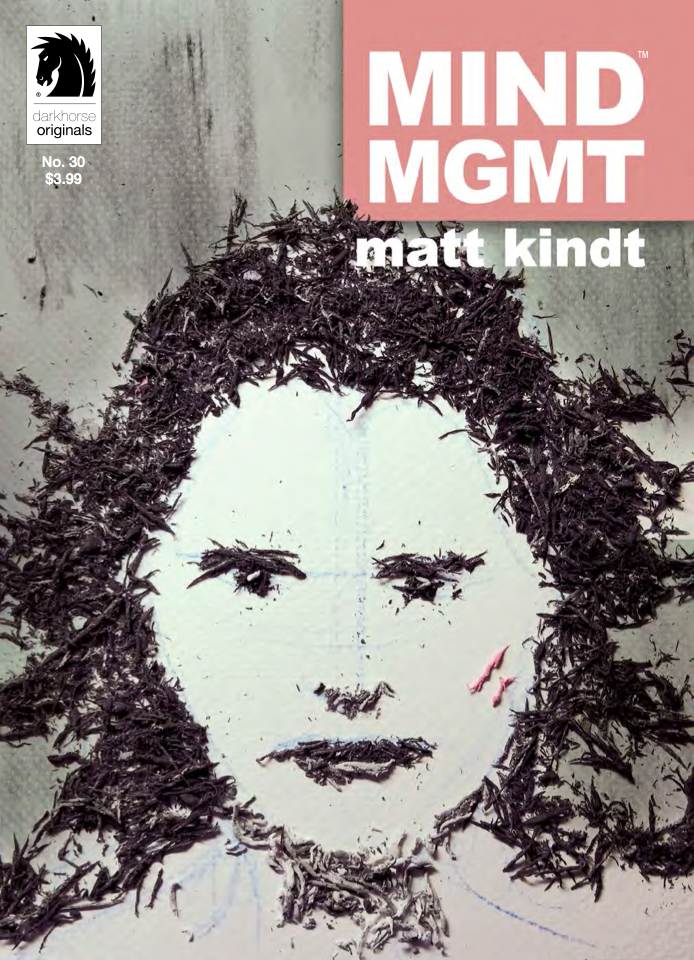Mind MGMT #30 is not the first time that Matt Kindt has explored the origin’s of The Eraser, the series primary antagonist. Small strips of torn paper scattered along the bottoms of pages much earlier in the series presented a portrait of this mysterious and very dangerous woman. Since then her role both within the organization and story has been more fully revealed, and as Kindt prepares to embark on the final story arc of Mind MGMT it is time to revisit the beginning of The Eraser one last time.
Videos by ComicBook.com
Like everything in Mind MGMT though, the manner in which this story is told is far from direct. Kindt applied the lens of fiction in order to address her life. The Eraser’s dead husband was an agent who used his fiction in order to attract new agents. Her narrative is visually presented as one of his science fiction stories with The Eraser shown as a futuristic space princess. The narration itself does not buy into this approach entirely with text boxes that remain grounded in reality juxtaposed with the fantastical images on the page. It creates a strain between the two and challenges the fabrication of what is being shown. In the final pages a new story without the guise of science fiction arises and pushes the believability of this narrative to the breaking point.
The narration itself is written in the second person. It does not discuss what The Eraser is doing, but rather what you are. The reader is placed in the shoes of The Eraser and drawn through the tragic events of her life. Kindt forces the reader to see themselves as a wife, a mother, a victim of domestic abuse, and much more. This positioning generates empathy for the woman who has become the villain of Mind MGMT. She has done terrible things, but has been driven by relatable goals. No matter the evil acts she may have committed, it is impossible to read Mind MGMT #30 and perceive The Eraser as purely evil. She is a complex, fully realized human being here.
Kindt’s presentation of the narrative is positively stunning. The style of his work is consistent with what has come before, but the media and methods are changed in order to provide new depth to the artwork. He relies primarily on charcoal and watercolor in order to induce a dreamlike quality in which forms lack sharp outlines. Panels waver on the page with only the hazy color of the paper to separate them. It is as if this story is rising from a deep fog, suddenly appearing but with a haze still obscuring some of its detail.
The result is one that beautifully represents the experience of memory and further embeds the reader into The Eraser’s point of view. This is not only a glimpse into the past, but into the head of this woman. Tension between reality and the story presented are not created by the active lying, but the result of years of abuse and memory alteration (both external and internal). The tortured nature of the entire narrative is indicative of The Eraser’s warped state of mind.
Mind MGMT #30 breaks from the ongoing narrative of the series in order to take one final look back at one of its most confounding and complex characters. Kindt’s continuing experiments within the comics form create another tremendous success. His visual metaphor for the process of memory and the narratives we construct in order to survive not only imparts meaning on the series past, but creates a bold stage for the final six issues to arrive.
Grade: A-










